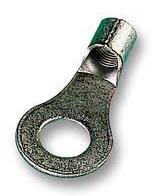- Popular Post

maxpower
-
Posts
1,341 -
Joined
-
Last visited
Content Type
Profiles
Forums
Downloads
Posts posted by maxpower
-
-
- Popular Post
- Popular Post
1 hour ago, colinneil said:Can somebody/ anybody explain to me how road safety is going to benefit?
What a priceless, totally useless thing to say.
Road safety fund = X
Personalized registration plate fund = Y
Some of Y goes into X which gives the road safety dept more to spend on promoting road safety.
-
 1
1
-
 2
2
-
17 hours ago, JollyJohn said:
Why am I getting 230vac on both the F terminal 20 and R terminal 21, terminals wrt to common at the same time whether I pulse open or closed? Seems strange to me.
The manual shows some kind of torque adjust which means there is more than simple relay control operating the motor. There will be additional solid state device controlling motor output.
This will explain weird meter readings.
My guess is relays energize to setup the motor direction and a solid state device applies the power based on torque setting. There will likely be a delay in relays turning off.-
 2
2
-
-
2 hours ago, Crossy said:
Excuse the crumby soldering

-
 1
1
-
-
1 hour ago, Digitalbanana said:
Do you have an example of another site?
I only find TV has this issue every day for several weeks now, never noticed on any other site and I visit many.
These sites use Cloudflare DNS
jquery.com
digg.com
digitalocean.com-
 1
1
-
-
17 hours ago, JollyJohn said:
Whether I give a closed or open command the motor output energises 230vac to both the forward and reverse at the same time.
Looking at the connections my guess is that after receiving a pulse from the external remote control the relays select direction of a capacitor start AC motor depending on the status of the limit switch inputs. I say this because of the markings at the motor connection.
If the limit is in the gate closed position the motor will open gate, if in open position motor will close gate.
-
Add CC CV circuit to suit the 4s battery and all will be fine. If a balance circuit is present you can adjust the output to suit its requirement.
I guess you have lost the UPS low battery cut off and the BMS gets it first. On some UPS this can be overcome by tweaking the battery voltage sense circuit.
Unless this UPS gets called upon often, I would not bother too much over the BMS cutting off. The voltage might rise above recovery once the load has gone away.
-
 1
1
-
-
- Popular Post
- Popular Post
2 hours ago, transam said:How much do you pay to use the site..?
You mean how much do you pay the site for the pleasure of writing its content.
-
 3
3
-
 1
1
-
 1
1
-
 1
1
-
3 hours ago, Susco said:
Thanks, start to get a headache of this now.
18650 cells are cheap, I would not stress too much.
Anyway if its really important ...
Genuine LiitoKala 18650 unprotected cells
No need to worry about what flavor mosfet is used on the BMS as long as the board is set to pass enough current for your need.
-
 1
1
-
-
8 hours ago, Muhendis said:
I installed six Philips LED "lamps" in my house and all but two failed within two years.
There are long and short life stories for all brands of LED lamp. My brothers Osram ES LED lamps started to die shortly after lightning hit a local transformer.
He now swears by the no brand X Ebay lamps that lose most of their output after six months.
These Shelby Electric lamps have a good life span ... -
- Popular Post
- Popular Post
37 minutes ago, Thujone said:In my experience, regardless of what it says on the box, some last a long time.
And some don't.
Tearing apart a Philips lamp and then a Guangdong special at half the price shows why the Philips build and component quality is likely to deliver the longer life. In a hard to access location a well known brand might be less of a risk.
-
 5
5
-
- Popular Post
- Popular Post
50 minutes ago, sanuk711 said:I didn't think many people used light bulbs now....a complete standard LED light at Global House is just over a 100 baht if used 8 hours a day, it will last 17 years.
The 50,000 hours life is if you don't take it out of its package.
-
 4
4
-
 2
2
-
 4
4
-
 22
22
-
1 hour ago, mixed said:
The controller that you linked to is more expensive than the panel itself. Do I need an expensive controller because I bought a larger panel and will I need several controllers if I have several panels? That controller is only suitable for 720w, which is 2 panels.
Originally I was thinking controllers were a small part of the cost, now it seems otherwise. Do I really need a PMMT controller in Thailand?
Unfortunately you have not chosen the best panel voltage for PWM charging a 12V battery. This probably came about through thinking only about the watts of panel and pump.
If you do manage to successfully get a PWM controller to charge your 12V battery with 330W 46V panel you will be throwing away power. This is often where the confusion starts when PWM charge controllers fail to deliver.
Before moving forward its best that you understand a little about power point and why MPPT control will help compensate for your mistake.
This video from ace tinkerer Julian Ilett breaks the ice.
-
 2
2
-
-
1 hour ago, mixed said:
Today the controller seems to be working fine, sending around 17v to the battery.
17V to a 12V battery ?
-
 1
1
-
-
18 minutes ago, mixed said:
The max solar input for 12v is listed as 23v. At times the controller was showing 30v, I tried to bring it down but couldn't get it below 25v (it would go back up to 30). I'm wondering if it's mistakenly reading the battery as 24v?
These controllers adjust their operating parameters from battery voltage applied and then expect to see a valid solar voltage to match. I have no idea how the PWM handles over voltage from the solar side. My guess is it goes out of range.
Your panel voltage exceeds the max value required by the charge controller.
-
11 minutes ago, mixed said:
I'm not 100% sure what you mean, but will try to answer. The specs say the panel's 'Maximum power voltage is 37.3'. At times the controller was showing 30v from the panel, other times the LCD switched off when it hit 15v.
Below are the instructions supplied with many of the 12V/24V PWM controllers from China. Note the panel voltage for a 12V battery.

-
I found the video below that shows how to operate a 12V pump with cheap PWM charge controller and battery. Note the solar panel power point voltage is around 18V (important). Charging would be improved by adding a identical panel in parallel.
-
2 minutes ago, mixed said:
What is the final panel voltage
-
56 minutes ago, mixed said:
Sorry to break the bad news but that is not a MPPT controller.
These $10 PWM controllers will almost certainly call it a day if expected to take the lions share of pump start current using available solar power and a low capacity battery.One would normally let the charge controller charge a battery then unleash the stored amps on the pumping operation. Direct pump operation from solar panels requires a lot more thought. Brushless DC motor control is a common method.
For battery charging and load, there should be at least some basic power matching with the solar panels. For PWM charging of a 12V battery I would expect it to be looking for around 18V from the panel.
-
- Popular Post
- Popular Post
1 hour ago, KannikaP said:Can anyone explain why the number pad on a PC keyboard has 1 2 3 at the bottom & 7 8 9 at the top.
Follows the layout for calculation or data input.

-
 3
3
-
22 hours ago, Brunolem said:
Are these the famous New Zealand All Blacks?
Yes, returning from another Aussie battering.
@PGSan was confused, I forgot to label the photo for those who find it a little too challenging.
-
As someone who knows nothing about truck brands, I would be looking at photos like this for some solid clues.
-
 1
1
-
 1
1
-
 1
1
-
-
Panel shading.
Bypass diodes can help reduce string loss and MPPT tracking will make adjustments to match changes.-
 1
1
-
-
Cheap solar panels definitely make the payback gamble more exciting for those that enjoy the thrill.
There are around 15 big solar panel players in China and zillions of smaller manufacturers churning out quality various. Like most products coming out of China, build and material quality varies immensely.There's a brand x panel factory near to our Shenzhen facility. The laminating line is filthy and quality control 1 in 1000 on a good day. They do look lovely entering the packing room though.
China produces some excellent budget panels with the price point often not far above bargain basement level. Names like Jinko and Trina often pop-up in the better quality discussions.
-
 2
2
-
-
Top search results reveals this musical video.
-
 1
1
-







Thailand gives green light to personalised car registration plates - road safety fund to benefit
in Thailand News
Posted
Road safety fund = X
Personalized registration plate fund = Y
Some of Y goes towards installing more CCTV cameras to catch law breakers.